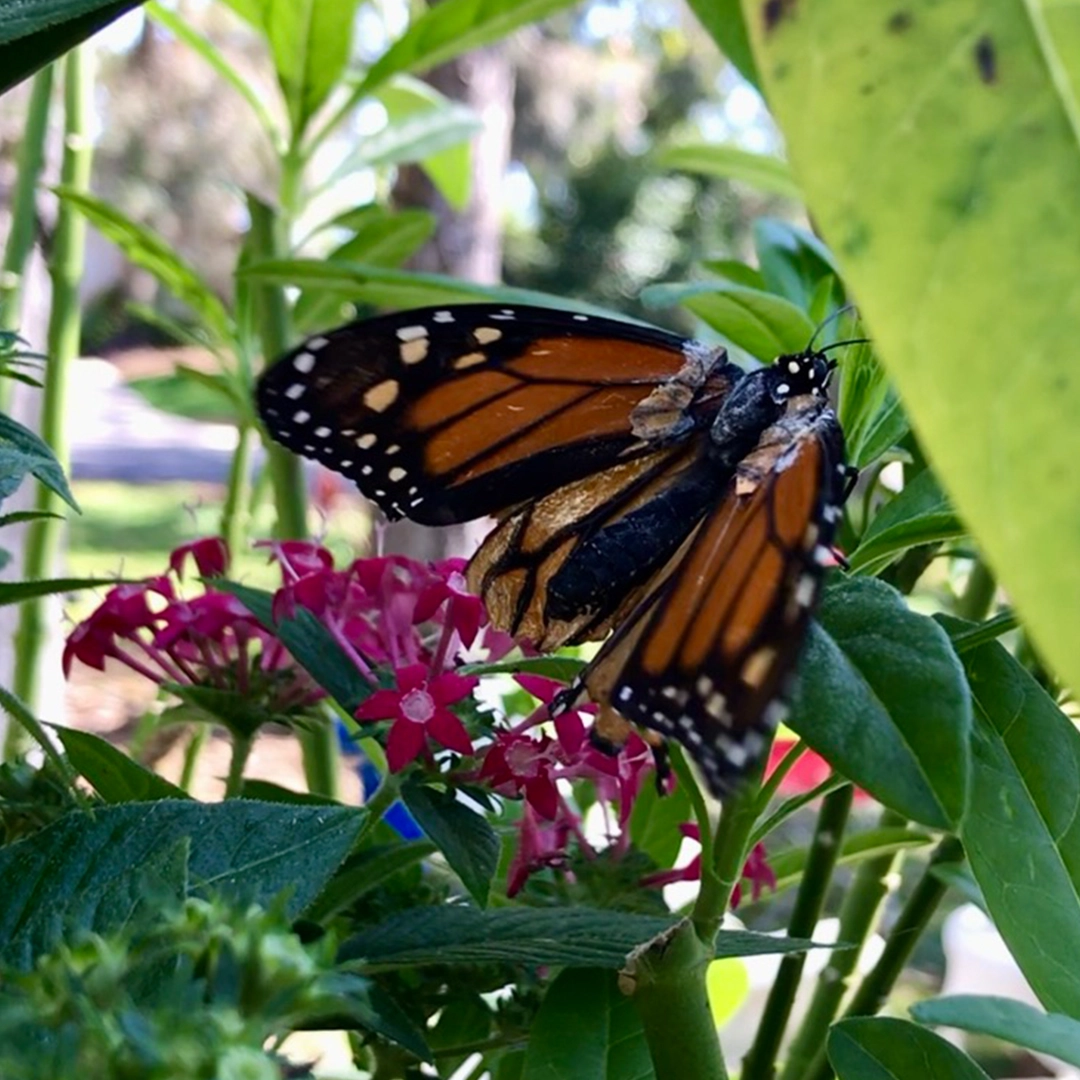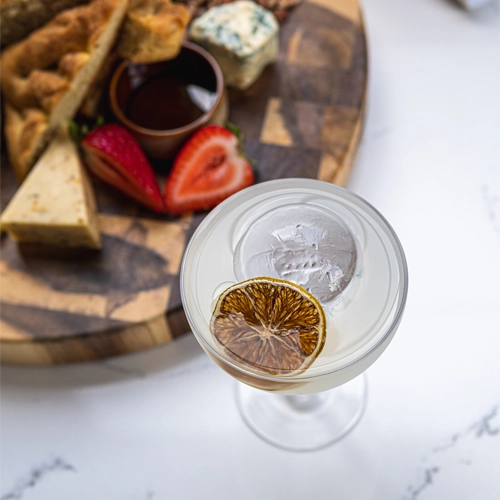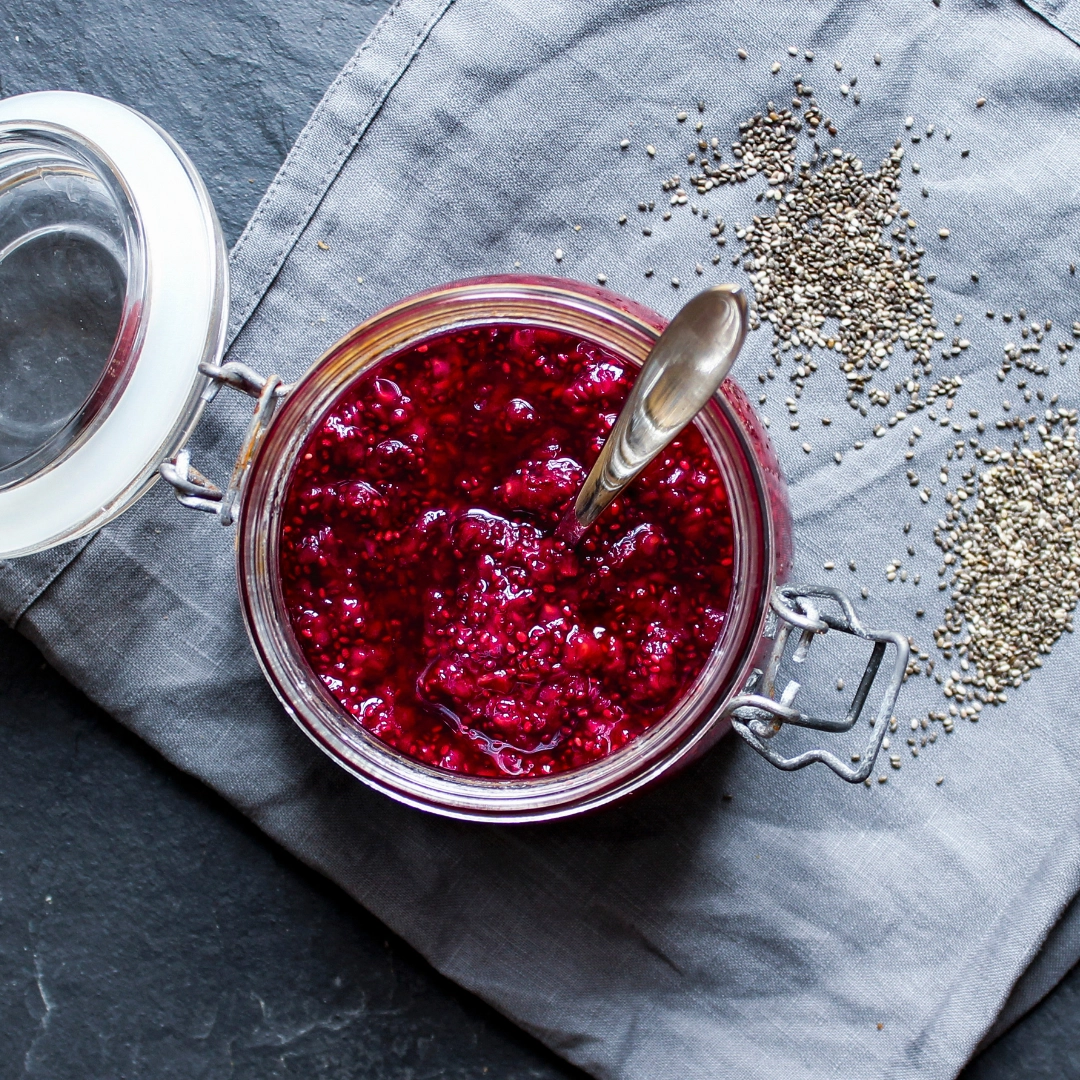by Diane Roberts | November 25, 2019
The Heat is On
Nowadays winter barely exists in Florida, where tides are high and iguanas and tropical fruit flourish where they once couldn’t.
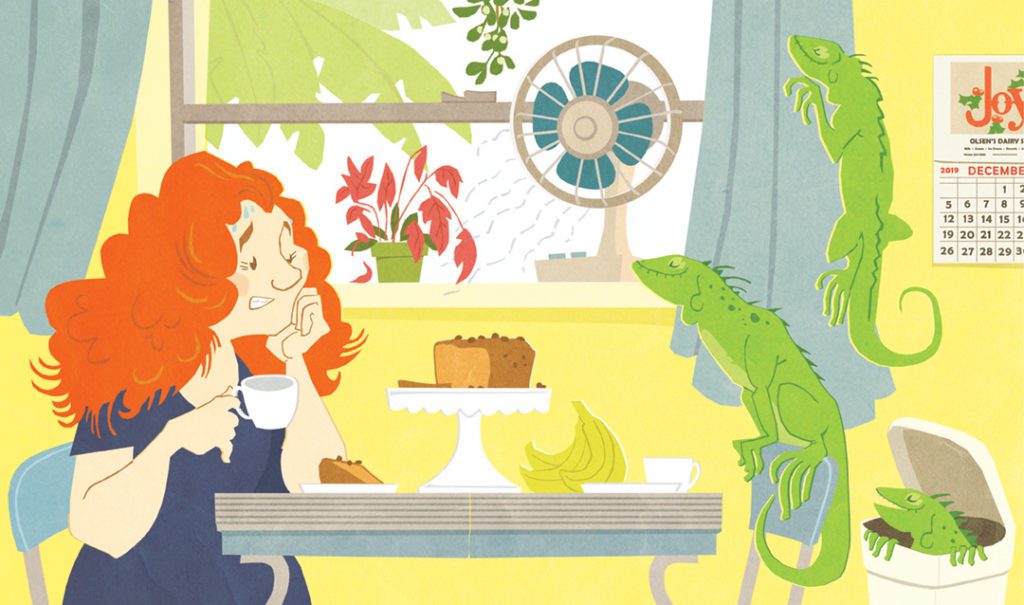
Fall in Tallahassee used to be cool. Sometimes even cold. You’d want a sweater on late September nights and a jacket on Halloween-—unless you were wearing the Pink Panther costume my mother sewed for me circa 1967. It was wool, so I was pretty toasty.
We’re cool no more. Florida—like the rest of the planet—is getting hotter by the year. According to the National Oceanic and Atmospheric Administration, the summer of 2019 was one of the hottest since they started keeping records in 1895. God knows what next year will be like. I am a native Floridian, but 12 months of nonstop heat strikes me as excessive. I fantasize about frost. I watch Scandinavian murder mysteries on Netflix, just to see people wearing sweaters. Sometimes I open the freezer door and just stand there, reminding myself how winter used to feel.
I’ve seen Florida change drastically over the course of my lifetime. In the northern half of the state, we used to have four seasons: spring, which began in late February or early March with a rosy explosion of Japanese magnolias (called “tulip trees” in these parts) and redbuds, then azaleas and dogwoods. Summer arrived in June with temperatures in the 80s and a ritual test of Florida-native toughness in which one person, sitting on the beach in St. Teresa with Gulf breezes ruffling his or her hair, would say to another, “I haven’t put the air conditioner on yet. It just seems too early,” and the other person, taking a sip of his or her Tom Collins, would say, “Well, we try to keep the windows open till at least the Fourth of July.” I regret to say there was a fair amount of lying and more-Floridian-than-thou posturing about the date the AC was actually deployed, but it is nevertheless the case that, 30 years ago, June was not the sticky inferno it has become.
September has always been a part of summer in these parts, even though it’s garlanded with the accoutrements of fall: potted chrysanthemums, football games, ads for back-to-school plaid skirts. Still, by October, the pecan trees shed their leaves and the air hinted at nippiness.
Most years, Christmas was appropriately wintery, though there were times when the weather did not cooperate. We took refuge in denial: on Christmas Day 1988, it was nearly 80 degrees. Our British house guests were thrilled. They sat out in the back yard with glasses of cold white wine. My mother, however, was sufficiently outraged. She switched on the air conditioner so that we could utilize the fireplace.
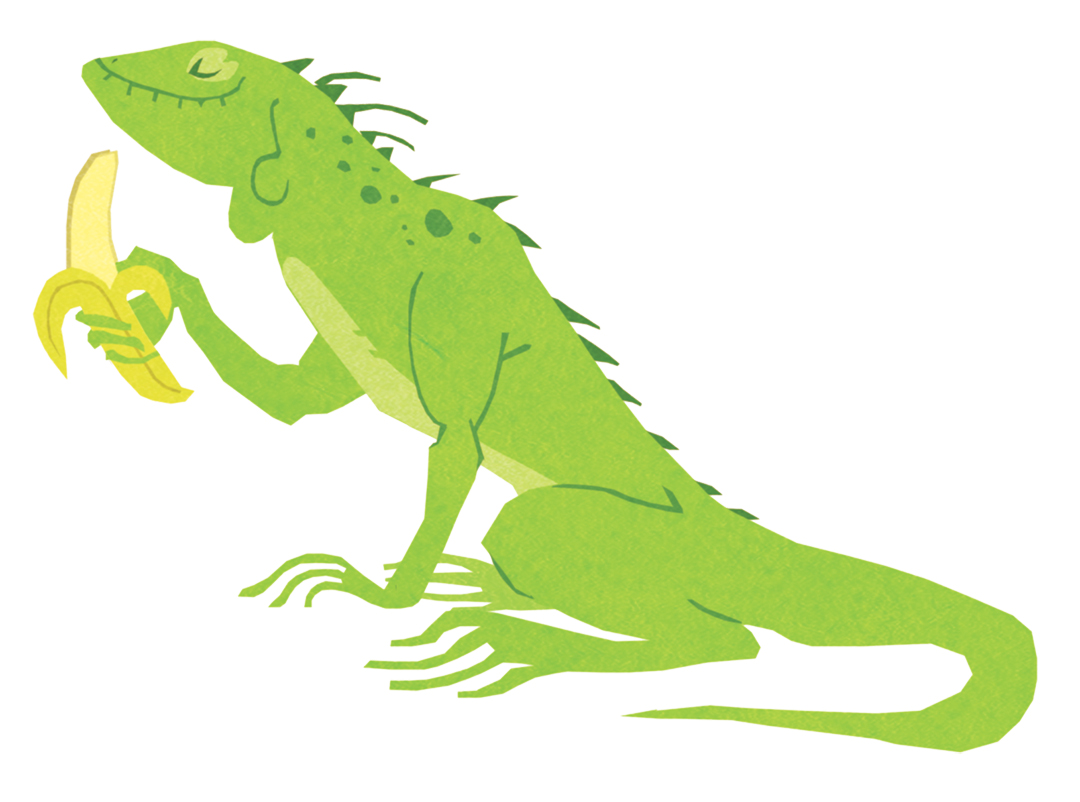
The year after, however, we hit peak seasonality. It actually snowed: 1.5 inches just before Christmas day. Just like a movie. People were advised to stay off the roads, since almost no one in Tallahassee had the least idea how to drive in snow. We made the dogs and the cats go out and sit on the white ground so we could take their pictures. We scraped enough flurries off the picnic table to have a very brief snowball fight.
Now, North Florida has two seasons: Bearable Temperate Interval and Eight Months of Hellish Heat with Soul-Sapping Humidity. I expect Hallmark to soon market appropriate greeting cards.
Despite Florida selling itself as a place of “endless summer,” climate-wise, warmer is not better. I am not talking about weather, though the weather is sultry enough, with days that feel like living under a broiler stuck on high and evenings like being smothered in a wet beach towel. I am talking climate, changes over decades to a particular region—the big picture of a big slice of earth.
Here’s the worry: The Gulf of Mexico was four to six degrees warmer than normal last year—if “normal” still has any meaning. The result? Hurricane Michael fed on that warm water like an offensive lineman feeds on juicy steaks, getting bigger, stronger and meaner. The oceans are now absorbing way too much carbon dioxide, at least 25 percent of what we produce when we burn coal, gas and oil, upping their temperatures and creating the perfect conditions for red tides. All that CO2 mixes with sea water to make carbonic acid, creating a seriously unfriendly living situation for crabs, corals, shellfish and oysters. The grouper, the speckled trout, the tarpon and so many other favorite Florida fish will have trouble finding food.
Red tides—a kind of toxic algal bloom—occur naturally, but between runoff from fertilizer (both from individuals and from farms) and warming temperatures, red tides are becoming more frequent and more lethal, killing fish, manatees, dolphins and even the occasional whale shark and generally stinking up the coast. Inland, sultrier temperatures encourage noisome nonnative critters to proliferate. Green iguanas, for example, once content to stomp around Central America, now swagger all over South Florida, eating plants, pooping on porches, digging up yards and—as if that isn’t sufficiently ghastly—carrying salmonella. More seriously, since most of Florida will be hotter and even more humid, mosquitoes will proliferate like horrible cable TV shows.
As polar ice melts, the seas rise, causing record high tides and regular flooding in Miami, Fort Lauderdale, Tampa and other low-lying parts of Florida which—let’s face it—means most of Florida. On average, the southern part of the state is only 6 feet above sea level. The water in the Gulf and the Atlantic is about 8 inches higher than it was in 1950 and projected to rise another foot or more by 2060. Higher seas mean saltwater pushing its way into the aquifer, the source of our drinking water. Florida’s limestone bedrock is so porous that the water can push up through the ground and flood your property, even if you don’t live on the beach.
I used to think it was funny that my father, a civil engineer, surveyed various tracts of Leon County to find a relatively high piece of land on which to build our house. What was he scared of, the Ochlockonee River breaching its banks? Lake Jackson flooding? I’m not laughing anymore: I’ve seen the river rise like somebody left the faucet on in the bathtub and the lake spill out over the highway. I’ve seen wetlands that developers thought they had filled reassert their watery character after a series of heavy rains, and old streams, now directed into pipes and hidden under roads, well up and inundate city streets. Daddy was right: geography is destiny.
Florida is built on the premise that we can control nature: spray the mosquitoes away, build sea walls, crank up the air conditioning when it gets too hot. More than 900 people a day are moving to this state, wanting their piece of endless summer, even as the waters rise. The scientists and sages tell us Florida is climate change ground zero. The first domino on the brink of falling.
If you need further evidence, here in Tallahassee, we just harvested our first banana crop. We’ve always had banana trees, with their lovely, glossy green fronds in summer. They were ornamental. In winter, back when that was a thing, they’d die down and turn into brittle brown stalks. We never had the least expectation of fruit: Bananas don’t belong here. Bananas belong in Miami. But here we are. With our bananas. I made banana bread, banana ice cream, banana cake—fine treats for the End Times.

